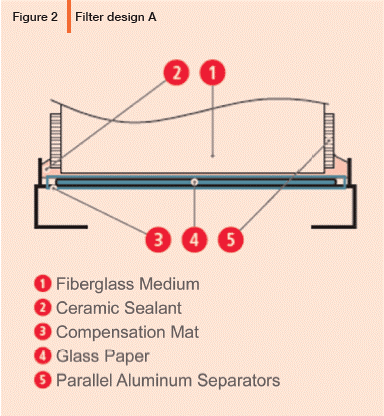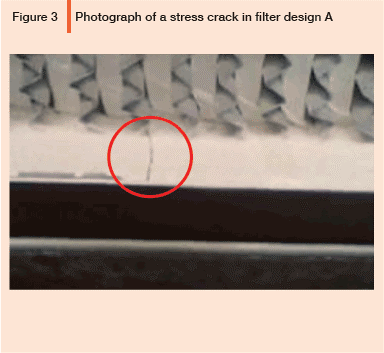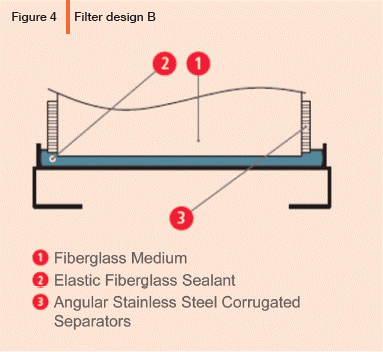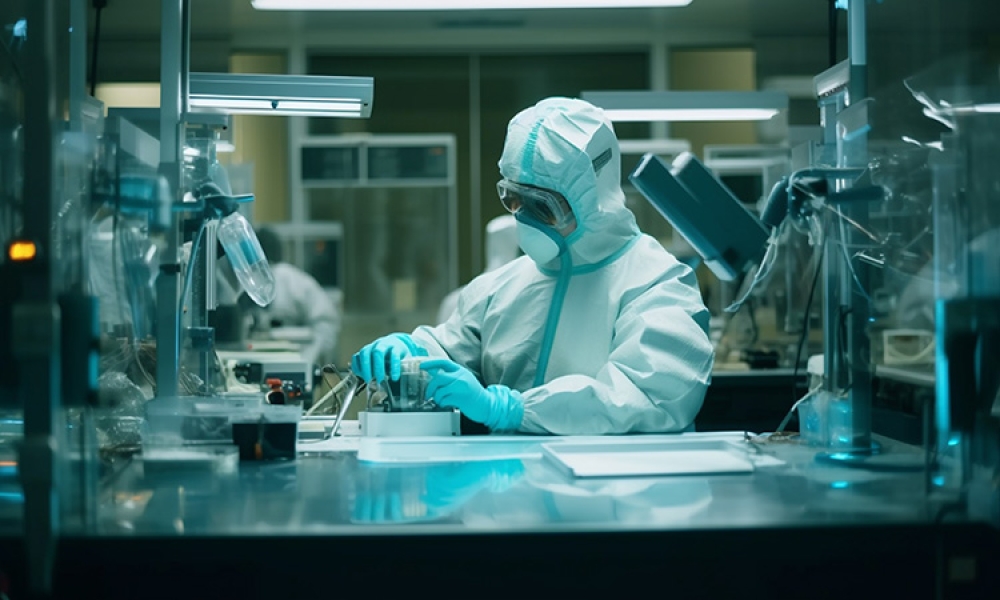Air Filtration Challenges & Answers for Dry-Heat Sterilization Tunnels Part 2

by Marc Schmidt, Business Development Manager, Pharma, for AAF International, Lothar Gail, Senior Contamination Consultant and Hugo Hemel, MSc, EMEA Marketing Manager for air filter manufacturer AAF International This article is featured in the September/October 2015 issue of Pharmaceutical Engineering®. Our three part series continues with part two detailing the available solutions for HEPA filters that can withstand temperatures up to 350°C.
Available HEPA Filter Solutions to the Challenges
Historically, the number of options available (to tunnel manufacturers and pharmaceutical end users) for HEPA filters that can withstand temperatures up to 350°C has been limited. This section will compare two high-temperature HEPA filter options, with information on selection considerations. The first option (A) is a filter design, which has served the pharmaceutical industry for many years. This filter type does, however, possess some generally known deficits, directly attributable to its construction and the components used. The second filter option (B) is a new design, which promises better long-term durability.
Option A: HEPA Filter with Ceramic Sealant and Aluminum Separators
The most commonly used filter option for sterilization tunnels comes with a ceramic sealant and fiberglass filter medium. (See Figure 2.) The medium is folded around aluminum separators, which, in turn, are placed in parallel in a stainless steel frame.

Because ceramic material is used to seal the aluminum-separated media pack to the frame, this filter type is sensitive to the formation of stress cracks. The cracks occur between the ceramic glue and the filter frame due to internal stresses created by process-driven temperature cycles. (See Figure 3.) In order to try to absorb the movement of the filter components during elevated temperature stages, the filter is equipped with a compensation mat located directly under the sealant.

The stress cracks can cause leaks that result in the bypass of unfiltered air. Particle emission may be created when the edges of a sealant crack rub each other due to normal airflow-induced vibration of the filter assembly. Such shedding into the tunnel can be exacerbated during even small temperature fluctuations6 , potentially resulting in contamination of the process. The air filter industry has worked together with the tunnel manufacturing industry to look for an alternative solution to reduce the risk of stress cracks. This has resulted in a so-called "dynamic seal," in which spacers are positioned on the "clean air side" of the installed filter. With this countermeasure, filtered air (which can include bypass air and particles released by the filter) is taken from the high-pressure hot zone of the tunnel and directed to the lower-pressure areas outside the hot zone, reducing the risk of contamination in the hot zone of the tunnel. Although this technique seems to reduce the problem, it is not a structural solution to the intrinsic issue with the filter design itself: For a long-term solution, the issue should be solved at the source. The same is true for installing a fine mesh immediately downstream of the (clean) filter outlet; the efficiency of such a mesh is limited by the mesh size – though it does provide mechanical protection to the more delicate filter media and will protect clean glass containers on the conveyor belt from being contaminated by larger particles released from the installed filter and applied gasket.
Option B: HEPA Filter with Elastic Fiberglass Sealant and Stainless Steel Separators
Similar to filter design A, filter design B comes with a stainless steel frame and a fiberglass media pack. It is free of silicone or other elastomers. The important differences are in the applied separator and sealant material. Filter design B, as shown in Figure 4, is equipped with corrugated stainless steel separators and stainless steel support bars and stays. This construction gives a high overall durability and is less prone to oxidation, which is stimulated by high temperatures and might also occur on the aluminum spacers if the filters are not stored in the correct environment. The risk of oxidized particles shedding off the separators on the air leaving side is eliminated. The separators are placed in a staggered position to increase the media pack stiffness and to prevent the separators from nesting. Applying integrated stainless steel stiffener plates and stays prevents the winding of the bottom of the pleats.

In addition to stainless steel separators and stiffeners, filter design B includes a compressed and elastic fiberglass sealant between the filter pack and the stainless steel frame, in contrast to the vulnerable ceramic sealant of filter design A. With the inclusion of a compressed and elastic fiberglass sealant, the HEPA filter is better able to compensate for the forces from heat stretching of components preventing the risk of integrity breaches from the stress cracks of ceramic sealant. As an alternative to filter design B, there is also a filter design available on the market in which a ceramic frame and fiberglass strands are applied to reduce differences in thermal expansion. However, this filter design is only available in an 84 mm depth configuration, whereas the majority of dry-heat sterilization installations today are based on HEPA filter configurations in a depth of 150 mm or 290 mm. Both filter designs A and B qualify for these installations, which is the reason why this article is focused on a direct comparison between these filter types only.
Missed part one and three? Catch up now Air Filtration Challenges & Answers for Dry-Heat Sterilization Tunnels Part 1 High Temperature HEPA Filter – Dry-Heat Sterilization Tunnels Part 3 Join ISPE today to get exclusive access to this article and more member benefits including full access to Pharmaceutical Engineering Magazine®. In February, the ISPE Training Institute will be conducting an HVAC training focusing on the common issues and problems in the operation of a facility and maintaining readiness for cGMP inspection. Sign up today!
- 6Gail, L., and H.-P. Hortig, "Haftung und Ablösen von Partikeln beim instationären Betrieb von Schwebstoff filtern (Collection, Adhesion and Removing of Particles during Unsteady

